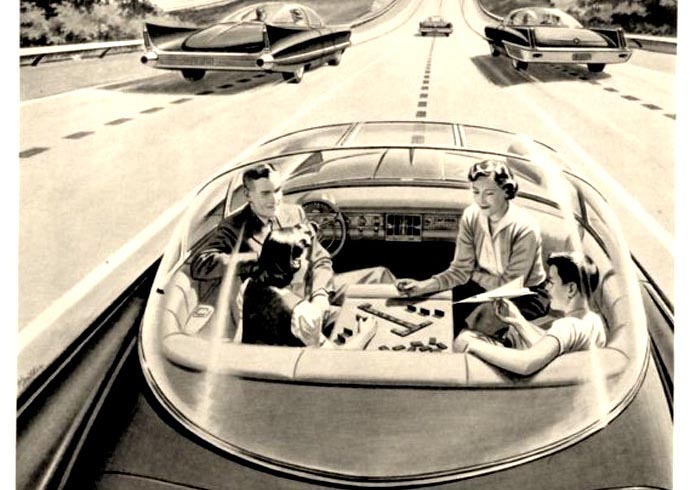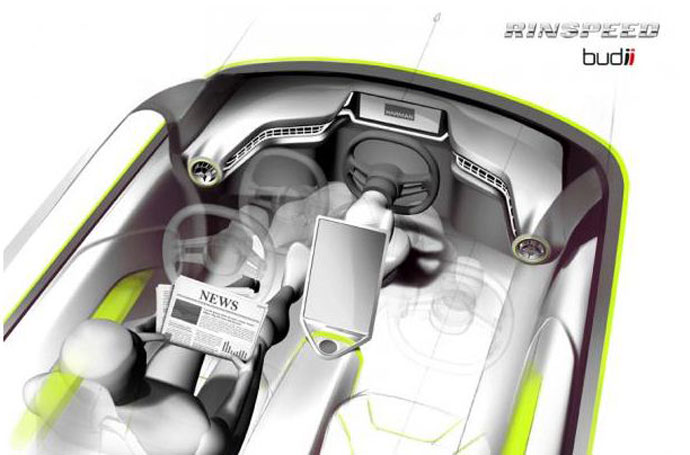
A fatal crash yesterday involving a Tesla using an automatic lane changing function brings added poignancy to the issue of driverless car ethics. The autopilot function concerned uses radar, ultrasonic sound, GPS navigation and cameras to allow computer-assisted parallel parking, steering and lane changing on motorways. It is seen as a precursor to fully automated cars.
By coincidence, Science Magazine last week posted the short film below asking whether it is better for an autonomous car to drive itself into a wall and risk the life of its driver than to plough into the pavement and thereby endanger pedestrians.
For the time being, the social dilemma of life and death decisions that may face self-driving cars remains entirely academic. The technological aspects of such vehicles is likely to outpace legislation for the foreseeable future, and more importantly, with 1.25 million people killed every year on the roads, casualty figures can only be improved by a fleet of vehicles that cannot speed, instigate road rage, drink drive, use mobile phones at the wheel or become tired.
It will frustrate drivers the world over, but it is a fact that artificial intelligence will soon outperform their every task. An artificial intelligence programme has recently defeated numerous air combat aces in a simulation, according to a paper published in the Journal of Defense Management. Using no more than the processing power available in a tiny, £20 computer such as the Raspberry Pi, the artificial intelligence is so fast it considers all options and executes the best response, all within a dynamic environment, over 250 times faster than its human opponents can blink. No wonder then that even when handicapped by an inferior aircraft, the computer outperformed pilot instructors on every occasion.
An interconnected fleet of autonomous cars that benefits from this degree of artificial deep learning beckons a reduction in road danger that at present we can only imagine.
The advent of autonomous cars has the potential to reduce congestion, emissions, fuel costs and, most importantly, road deaths. The idea of using driverless ‘crash-proof’ cars to address these problems might seem fanciful, but the most significant barrier to their successful introduction is likely to be cultural rather than technological.

Reading a newspaper at the wheel: More relaxing for you and safer for others
The lightning speed of recent technical developments has enabled prototypes, including the Google car, to cover hundreds of thousands of kilometres in driverless mode – advances that not only promise safer roads, but force us to redefine our relationship with the automobile.
According to the founder of Swiss car company Rinspeed, Frank Rinderknech,: “Until now, what we have primarily associated with auto mobility was freedom and individuality. And – consciously or unconsciously – we are prepared to pay a high price in many regards for these privileges. We need only look at the accident statistics.”
There is a sense of inevitability about a change to autonomous driving, but any such change is likely to be gradual. Britain’s most popular car, the Ford Focus, is now offered with a self-parking feature – an optional extra that takes control of the steering to execute a perfect parallel park – but taking an entirely passive role for the entirety of a journey represents a seismic change in our relationship with our cars.
Artificial intelligence in cars
Artificial intelligence (AI) may enable the next generation of cars to learn how to best negotiate busy streets. Incidentally, although such cars promise to reduce road danger, they may bring with an altogether new risk. In an interview following the launch last week of software designed to help him communicate more easily, Stephen Hawking said that self-learning artificial intelligence, left to develop unimpeded, poses a risk to the survival of humanity.
Others are less gloomy about AI and a concept car by Rinspeed proposes a hybrid approach. The Budii concept car boasts an autopilot feature that quickly learns the habits and preferences of its ‘boss’. The steering wheel is supported by a robotic arm, which enables either the driver or the front passenger to steer. When the wheel is parked in its centre position, the car drives itself.
According to Rinspeed, this hybrid driverless car will give motorists time to adjust to the new technology: “The transition from traditional to autonomous driving will take place in stages. Consequently, man and machine will still have a few years left to get used to this new form of mobility and the different interplay between people and technology it will entail, time they both will need.”
Road traffic collisions are the number one cause of death globally among those aged 15-29 years – in the time it has taken you to read this article, four people have been killed on the roads. If autonomous car technology can bring an end to this carnage, it cannot come soon enough.
ETA breakdown cover
Established 26 years ago, and with over 5,000 recovery trucks on call 24/7, the ETA has a proven track record of providing efficient, reliable breakdown cover. We handpick only the best local mechanics and garages around Britain to send out if you break down. We believe this way of working is efficient, environmentally friendly and helps support local communities and economies, too. It’s one of the reasons we are Britain’s most ethical insurance company.
Sam Marshall
The author states “it is a fact that artificial intelligence will soon outperform their every task”.
This is not a fact, it is a prediction. Current AI technology falls well short of human abilities in complex driving situations such as urban environments. The Google car only works on a closed campus road. The Tesla only on motorways. Clearly the technology is advancing, but we don’t yet know how far it can go or if it really will be eventually safer.
ETA
If you extrapolate the current rate of development in this area – and then half it for good measure – fully autonomous vehicles will be with us in the very near future. According to Elon Musk, Tesla will be capable of driverless operation within two years. Whether or not legislation can move as quickly is open to discussion.
whobiggs
I would choose the self sacrifice car, you are the driver therefore responsible for others who may be totally innocent….ah there’s another dilemma. What if they are not innocent ie reckless or deliberate in their actions? Hmmm?